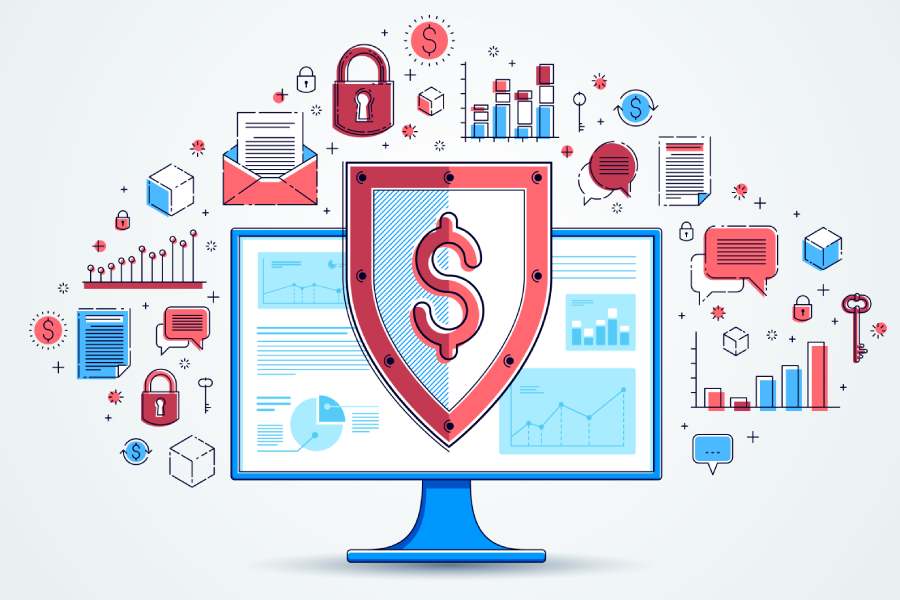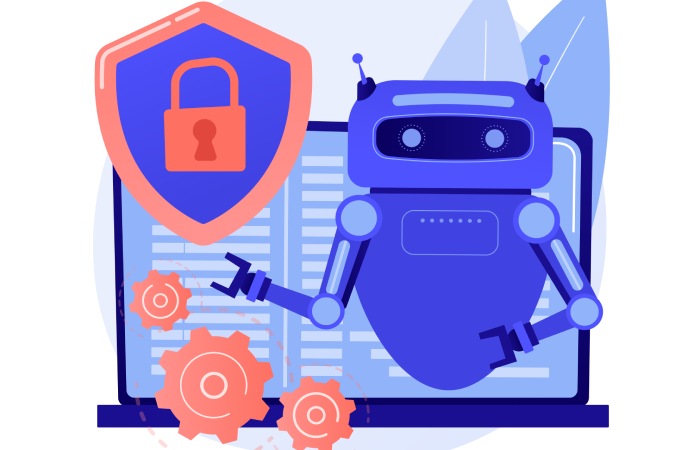For a lot of people, protection is something that happens retroactively. You only think about security after your home has been broken or your car has been stolen. Before that, these instances only seem to happen to other people.
The same thing happens with your online business. You wait for the problem to happen, and you plug the gap in your system retroactively.
There are so many problems with this approach.
First, the cost related to the attack can be incredibly high. Second, even a single reputation hit can be enough to ruin the future of a new business. Remember, as a newcomer to a well-established industry, you’re not really starting from zero (you’re probably working up your way toward a zero from a significant negative). So, you cannot afford a step back (especially this big and this early).
With all of that in mind and without further ado, here’s how you can easily protect your online business from day one.
Start with the basics
From the very start, you will have to make a few choices that will deeply affect your ability to protect your business in a digital environment.
First, you need to choose a strong hosting service. This starts with figuring out what kind of web hosting you need, reviewing some options, and picking the right web hosting package. If you’re planning to build a real-time application, consider looking into Node.js hosting for better performance, or you can choose a dedicated hosting for more control and resources if you’re running a high-traffic website or complex project. Then, you need to read some reviews of web hosting companies and look at other amenities they offer. One of the biggest downsides is making a choice exclusively on price.
Next, when it comes to evaluating cybersecurity, you need to understand that hackers and viruses are not always the ones that cause a problem. Sometimes, the flaw will be in the system, which is why you have to make regular backups to ensure that you do not lose data. In some scenarios, a loss of data can be significantly worse than a material loss of another kind.
You also want to implement an SSL certificate. The thing is that, in 2024, SSL certificates are no longer mandatory. You see, your audience expects your site to have it, and they won’t even think about it until their browser prevents them from accessing your site because you don’t have the certificate in question. This is an immediate reputation hit and a step on which some of your audience members might just give up.
Lastly, you need to keep in mind that, even with all your efforts, incidents will happen. Still, this is fine as long as you have a good incident response plan that you’ll abide by.
Focus on the user data
Next, you need to understand why you need all that user data, and the answer is simple: without it, you can’t get your audience what they want. With the right data, you can save their time by serving them the exact offers that they’re interested in, dosing their interests, and even using their previous visit history to improve your upselling and cross-selling strategy.
The problem is that all this information is protected by law, and you can’t just go around collecting it as you see fit. At least, you can’t without crafting a strong website privacy policy. This way, you’re communicating to your clients (and indirectly to regulatory bodies) exactly how and why you’re doing this. These are pretty boilerplate, but you can make things a bit simpler by getting a template and adjusting it slightly to your needs.
You also want to resolve the issues regarding data consent management. The problem with this lies in jurisdictional overlaps. Sometimes, even if you’re not from the country in question, your audience is, which means that you now have to abide by their laws and regulations, as well.
Encryption is very important, but you need to ensure that the data is encrypted every step of the way. Both in storage and in transit, it needs to be unavailable to anyone without a proper key.
Ultimately, you want to stick to the practice of data minimization. This means that you’ll only get and keep the data you absolutely need. This way, you’re minimizing both the spread and the risk.
Testing your own system
You don’t want to wait for the problem to escalate in order to start tending to it. Instead, what you want is to try and emulate these conditions and see if any of the problems show up on feed. Of course, these “emulated” conditions will not be the real thing but they’re the closest thing you can get to (safely) during the testing stage.
You want to start with some penetration testing. The way this works is simple, you hire a “white-hat hacker,” which is a person who has all the skillset of a hacker but does so for the purpose of flashing out all the flaws and exploits in your system.
Next, instead of theorizing about potential flaws in your system, you have to see examples of an attack surface in your own system. By getting a real-time view of attack surfaces, you will have an easier time focusing on issues that require more of your attention.
One thing you just have to bear in mind is that no matter how hard you try during the planning stage, no battle plan ever survives the first contact with an enemy. Make sure to check every single thing you find suspicious.
At the end of the day, you don’t even have to go full simulation mode. Sometimes, all it takes is hiring someone to handle a cybersecurity audit of your site.
The biggest problem that people make in this field is assuming that they understand how things work. First of all, as a business owner, you don’t really have the experience of an average user. Second, you’re neither a hacker nor a cybersecurity expert. This means that, no matter where you’re coming from, you need some outside help and an outsider’s (specialist’s) perspective.
(Partially) take away their agency
Given an opportunity, a lot of your site’s visitors will take an easier route. The problem is that this route always exposes them to more danger. Why is this the case? Well, 2FA requires you to do two things instead of one; coming up with a simple password makes it easier to memorize and type, etc.
Seeing as how they’re hardwired to take the lazy approach (at least some of them), you have to take away their agency on these matters and decide in their stead.
First, you need to set hard passwords as a requirement to register. You can’t allow them to use “password” as their password. At the very least, ask them to pick something like “P@ssword1.” We know it’s still not the best of options, but if they’re dead-set to neglect their cybersecurity, you should try to make it at least a bit harder.
Next, you need to insist on 2FA. Sure, it slows down the login process, but this extra step of using the code they receive in an email or SMS could actually save them online. It cannot be skipped just because it’s a bit inconvenient.
Lastly, create a system where they can memorize their own device and receive notifications on logins from different locations and devices.
Try to educate your audience
A lot of people have heard about phishing; however, what about the difference between conventional phishing, smishing, and vishing? This might be your first encounter with the latter two terms. This brings us to a very important question: How do you protect yourself against a threat you aren’t even aware exists? Can you realistically expect this from your customers?
Phishing is a standard security scam where a malicious online party tries to impersonate a credible source. They give you a page that looks like something trusted (Facebook, Wikipedia, or an official site of a major game developer). Then, they use this authority to try and steal your info.
Smishing, on the other hand, is the so-called SMS phishing. It’s similar to phishing, but it uses a link sent in SMS to try to create a sense of urgency and authenticity.
Ultimately, you have vishing, which is a phone call-based scam. If they have your phone number they can just call and ask you for a piece of personal info.
One of the most important tips for staying safe is to be careful and always suspect the person on the other end of the line. Don’t be too quick to give out your personal info, and, at the very least, hover over any link before you click on it.
Protecting your online business is a task whose importance scales with your organization
Introducing safety policies gives you a more systematic approach to your site’s cybersecurity. Instead of relying on intuition (which is unreliable, not the same for everyone, and easy to go around), systems are far sturdier and more reliable. It’s exactly this kind of reliability that a business owner needs.
By Srdjan Gombar
Veteran content writer, published author, and amateur boxer. Srdjan has a Bachelor of Arts in English Language & Literature and is passionate about technology, pop culture, and self-improvement. In his free time, he reads, watches movies, and plays Super Mario Bros. with his son.




